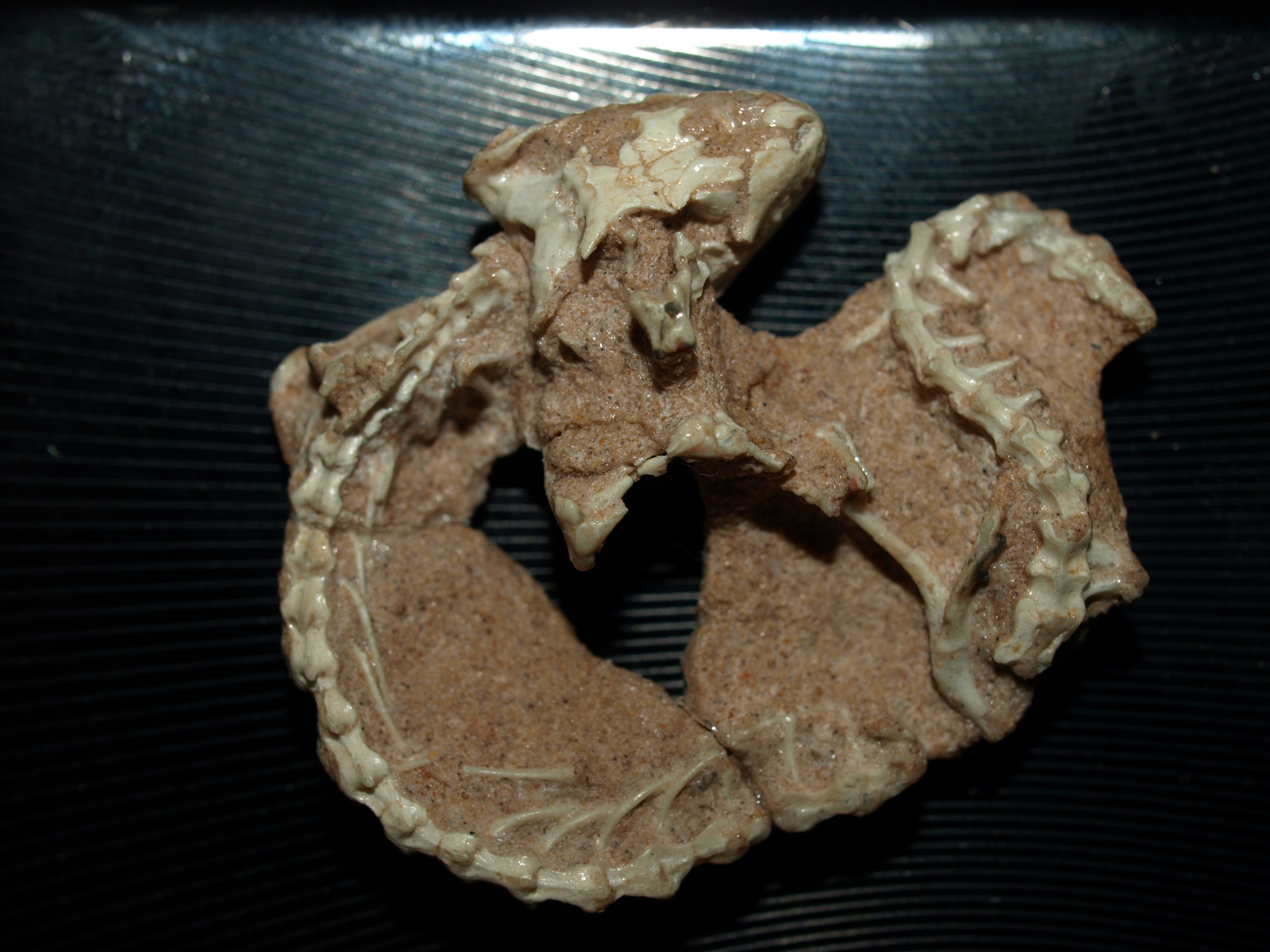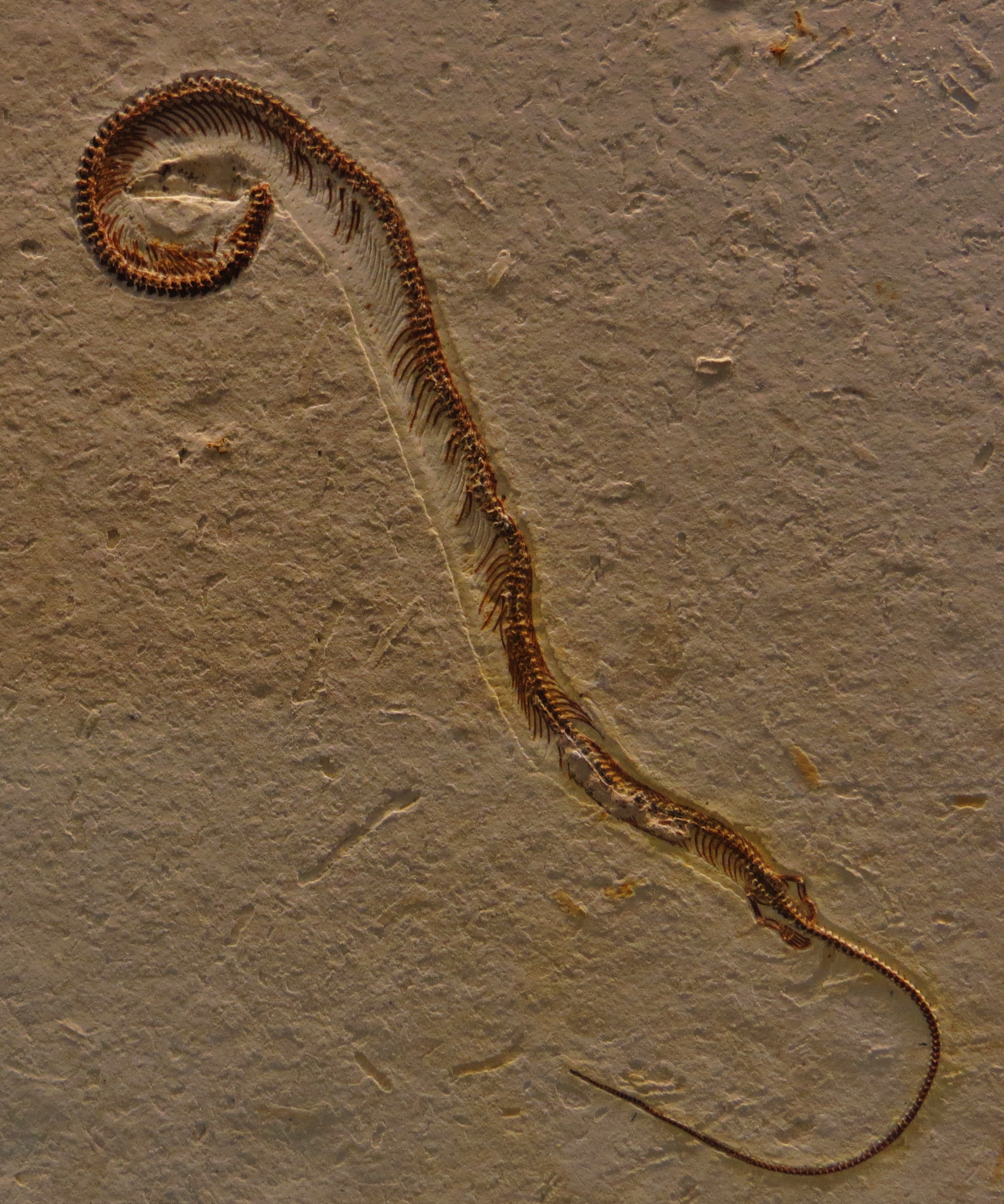|
Archelosauria
Archelosauria is a clade grouping turtles and archosaurs (birds and crocodilians) and their fossil relatives, to the exclusion of lepidosaurs (the clade containing lizards, snakes and the tuatara). The majority of phylogenetic analyses based on molecular data (e.g. DNA and proteins) have supported a sister-group relationship between turtles and archosaurs. On the other hand, Archelosauria has not been supported by most morphological analyses, which have instead found turtles to either be descendants of parareptiles, early-diverging diapsids outside of Sauria, or close relatives of lepidosaurs within the clade Ankylopoda. Classification Multiple sequence alignments of DNA and protein sequences and phylogenetic inferences have shown that turtles are the closest living relatives to birds and crocodilians. There are about 1000 ultra-conserved elements in the genome that are unique to turtles and archosaurs, but which are not found in lepidosaurs. Other genome-wide analyses also su ... [...More Info...] [...Related Items...] OR: [Wikipedia] [Google] [Baidu] |
Capitanian
In the geologic timescale, the Capitanian is an age or stage of the Permian. It is also the uppermost or latest of three subdivisions of the Guadalupian Epoch or Series. The Capitanian lasted between and million years ago. It was preceded by the Wordian and followed by the Wuchiapingian.; 2004: ''A Geologic Time Scale 2004'', Cambridge University Press A significant mass extinction event occurred at the end of this stage, which was associated with anoxia and acidification in the oceans and possibly caused by the volcanic eruptions that produced the Emeishan Traps. This extinction event may be related to the much larger Permian–Triassic extinction event that followed about 10 million years later. Stratigraphy The Capitanian Stage was introduced into scientific literature by George Burr Richardson in 1904. The name comes from the Capitan Reef in the Guadalupe Mountains (Texas, United States). The Capitanian was first used as a stratigraphic subdivision of the Guadal ... [...More Info...] [...Related Items...] OR: [Wikipedia] [Google] [Baidu] |
Ankylopoda
Ankylopoda was a proposed clade that hypothetically contains turtles and lepidosaurs (tuatara, lizards and snakes) and their fossil relatives. This clade is supported based on microRNAs as well as the fossil record. However, it was strongly contradicted by molecular evidence which supports Archelosauria. Classification The cladogram below follows the most likely result found by another analysis of turtle relationships, this one using only fossil evidence, published by Rainer Schoch and Hans-Dieter Sues in 2015. This study found ''Eunotosaurus'' to be an actual early stem-turtle, though other versions of the analysis found weak support for it as a parareptile Parareptilia ("at the side of reptiles") is a subclass or clade of basal sauropsids (reptiles), typically considered the sister taxon to Eureptilia (the group that likely contains all living reptiles and birds). Parareptiles first arose near the .... See also * Archelosauria, an alternative clade that places turtl ... [...More Info...] [...Related Items...] OR: [Wikipedia] [Google] [Baidu] |
Python (genus)
''Python'' is a genus of constricting snakes in the Pythonidae family native to the tropics and subtropics of the Eastern Hemisphere. The name ''Python'' was proposed by François Marie Daudin in 1803 for non-venomous flecked snakes. Currently, 10 python species are recognized as valid taxa. Three formerly considered python subspecies have been promoted, and a new species recognized. Taxonomy The generic name ''Python'' was proposed by François Marie Daudin in 1803 for non-venomous snakes with a flecked skin and a long split tongue. In 1993, seven python species were recognized as valid taxa. On the basis of phylogenetic analyses, between seven and 13 python species are recognized. Distribution and habitat In Africa, pythons are native to the tropics south of the Sahara, but not in the extreme south-western tip of southern Africa (Western Cape) or in Madagascar. In Asia, they occur from Bangladesh, Nepal, India, Pakistan, and Sri Lanka, including the Nicobar Islands, t ... [...More Info...] [...Related Items...] OR: [Wikipedia] [Google] [Baidu] |
Anolis
''Anolis'' is a genus of anoles (), iguanian lizards in the family Dactyloidae, native to the Americas. With more than 425 species, it represents the world's most species-rich amniote tetrapod genus, although many of these have been proposed to be moved to other genera, in which case only about 45 ''Anolis'' species remain. Previously, it was classified under the family Polychrotidae that contained all the anoles, as well as '' Polychrus'', but recent studies place it in the Dactyloidae. Taxonomy This very large genus displays considerable paraphyly, but phylogenetic analysis suggests a number of subgroups or clades. Whether these clades are best recognized as subgenera within ''Anolis'' or separate genera remains a matter of dispute. If the clades are recognized as full genera, about 45 species remain in ''Anolis'', with the remaining moved to ''Audantia'' (9 species), ''Chamaelinorops'' (7 species), ''Ctenonotus'' (more than 40 species), ''Dactyloa'' (''circa'' 95 speci ... [...More Info...] [...Related Items...] OR: [Wikipedia] [Google] [Baidu] |
Squamata
Squamata (, Latin ''squamatus'', 'scaly, having scales') is the largest order of reptiles, comprising lizards, snakes, and amphisbaenians (worm lizards), which are collectively known as squamates or scaled reptiles. With over 10,900 species, it is also the second-largest order of extant (living) vertebrates, after the perciform fish. Members of the order are distinguished by their skins, which bear horny scales or shields, and must periodically engage in molting. They also possess movable quadrate bones, making possible movement of the upper jaw relative to the neurocranium. This is particularly visible in snakes, which are able to open their mouths very wide to accommodate comparatively large prey. Squamata is the most variably sized order of reptiles, ranging from the dwarf gecko (''Sphaerodactylus ariasae'') to the Reticulated python (''Malayopython reticulatus'') and the now- extinct mosasaurs, which reached lengths over . Among other reptiles, squamates are most ... [...More Info...] [...Related Items...] OR: [Wikipedia] [Google] [Baidu] |
Sphenodon
Tuatara (''Sphenodon punctatus'') are reptiles endemic to New Zealand. Despite their close resemblance to lizards, they are part of a distinct lineage, the order Rhynchocephalia. The name ''tuatara'' is derived from the Māori language and means "peaks on the back". The single extant species of tuatara is the only surviving member of its order. Rhynchocephalians originated during the Triassic (~250 million years ago), reached worldwide distribution and peak diversity during the Jurassic and, with the exception of tuatara, were extinct by 60 million years ago. Their closest living relatives are squamates (lizards and snakes). For this reason, tuatara are of interest in the study of the evolution of lizards and snakes, and for the reconstruction of the appearance and habits of the earliest diapsids, a group of amniote tetrapods that also includes dinosaurs (including birds) and crocodilians. Tuatara are greenish brown and grey, and measure up to from head to tail-tip and w ... [...More Info...] [...Related Items...] OR: [Wikipedia] [Google] [Baidu] |
Lepidosauria
The Lepidosauria (, from Greek meaning ''scaled lizards'') is a subclass or superorder of reptiles, containing the orders Squamata and Rhynchocephalia. Squamata includes snakes, lizards, and amphisbaenians. Squamata contains over 9,000 species, making it by far the most species-rich and diverse order of reptiles in the present day. Rhynchocephalia was a formerly widespread and diverse group of reptiles in the Mesozoic Era. However, it is represented by only one living species: the tuatara (''Sphenodon punctatus),'' a superficially lizard-like reptile native to New Zealand. Lepidosauria is a monophyletic group (i.e. a clade), containing all descendants of the last common ancestor of squamates and rhynchocephalians. Lepidosaurs can be distinguished from other reptiles via several traits, such as large keratinous scales which may overlap one another. Purely in the context of modern taxa, Lepidosauria can be considered the sister taxon to Archosauria, which includes Aves (birds ... [...More Info...] [...Related Items...] OR: [Wikipedia] [Google] [Baidu] |
Lacerta Agilis
The sand lizard (''Lacerta agilis'') is a lacertid lizard distributed across most of Europe from France and across the continent to Lake Baikal in Russia. It does not occur in European Turkey. Its distribution is often patchy. In the sand lizard's northern populations, such as in Great Britain, it is only able to survive along coastal heathlands where the sand is hot enough to incubate their eggs. Males are known for their bright colorations and aggressive behaviors when competing for females. Their mating process is unique because of its relatively short time period and because males are generally more selective with who they mate with than females. Females typically only lay a single clutch in a year. Sand lizards spend most of their time basking, foraging, or under vegetation and prefer to live in diverse habitats. Males have their own home territories that are very wide and often overlap with other males. These males compete with each other while females have smaller home t ... [...More Info...] [...Related Items...] OR: [Wikipedia] [Google] [Baidu] |
Testudo Graeca
The Greek tortoise (''Testudo graeca''), also known commonly as the spur-thighed tortoise, is a species of tortoise in the family Testudinidae. ''Testudo graeca'' is one of five species of Mediterranean tortoises (genera '' Testudo'' and '' Agrionemys''). The other four species are Hermann's tortoise (''T. hermanni''), the Egyptian tortoise (''T. kleinmanni''), the marginated tortoise (''T. marginata''), and the Russian tortoise (''A. horsfieldii''). The Greek tortoise is a very long-lived animal, achieving a lifespan upwards of 125 years, with some unverified reports up to 200 years. Geographic range The Greek tortoise's geographic range includes North Africa, Southern Europe, and Southwest Asia. It is prevalent in the Black Sea coast of the Caucasus (from Anapa, Russia, to Sukhumi, Abkhazia, Georgia (country), Georgia, to the south), as well as in other regions of Georgia (country), Georgia, Armenia, Iran, and Azerbaijan. Evolution The oldest known definitive fossil is fro ... [...More Info...] [...Related Items...] OR: [Wikipedia] [Google] [Baidu] |
Crocodylus Niloticus
''Crocodylus'' is a genus of true crocodiles in the family Crocodylidae. Taxonomy The generic name, ''Crocodylus'', was proposed by Josephus Nicolaus Laurenti in 1768. ''Crocodylus'' contains 13–14 extant (living) species and 5 extinct species. There are additional extinct species attributed to the genus ''Crocodylus'' that studies have shown no longer belong, although they have not yet been reassigned to new genera. Extant species The 13–14 living species are: Fossils ''Crocodylus'' also includes five extinct species: * † '' Crocodylus anthropophagus'' is an extinct crocodile from Plio-Pleistocene of Tanzania. * † '' Crocodylus checchiai'' is an extinct crocodile from Late Miocene of Kenya. * † '' Crocodylus falconensis'' is an extinct crocodile from Early Pliocene of Venezuela. * † '' Crocodylus palaeindicus'' is an extinct crocodile the Miocene to the Pleistocene of southern Asia. * † '' Crocodylus thorbjarnarsoni'' is an extinct crocodile from Plio-Ple ... [...More Info...] [...Related Items...] OR: [Wikipedia] [Google] [Baidu] |





%2C_NPSPhoto_(9255693421).jpg)